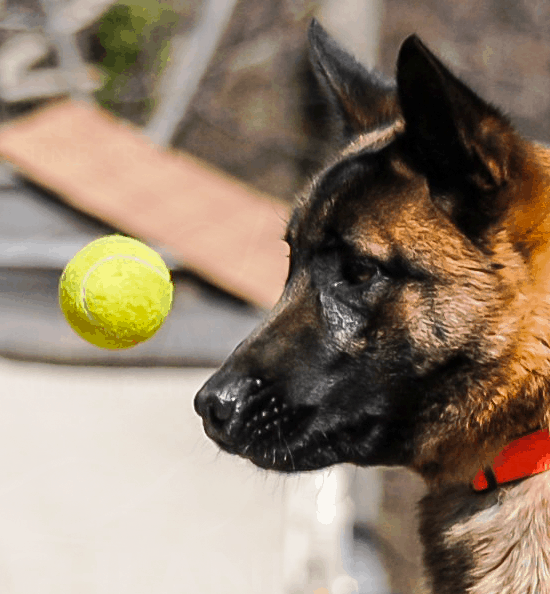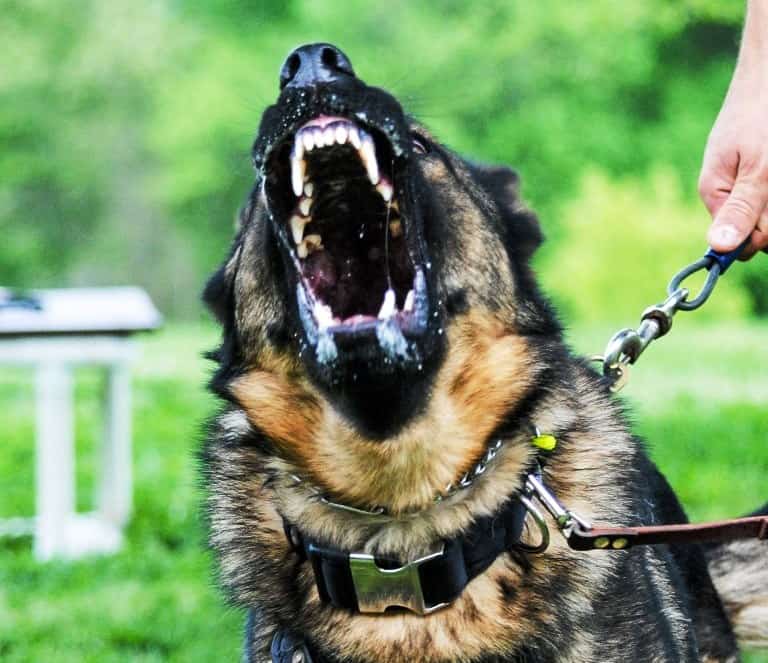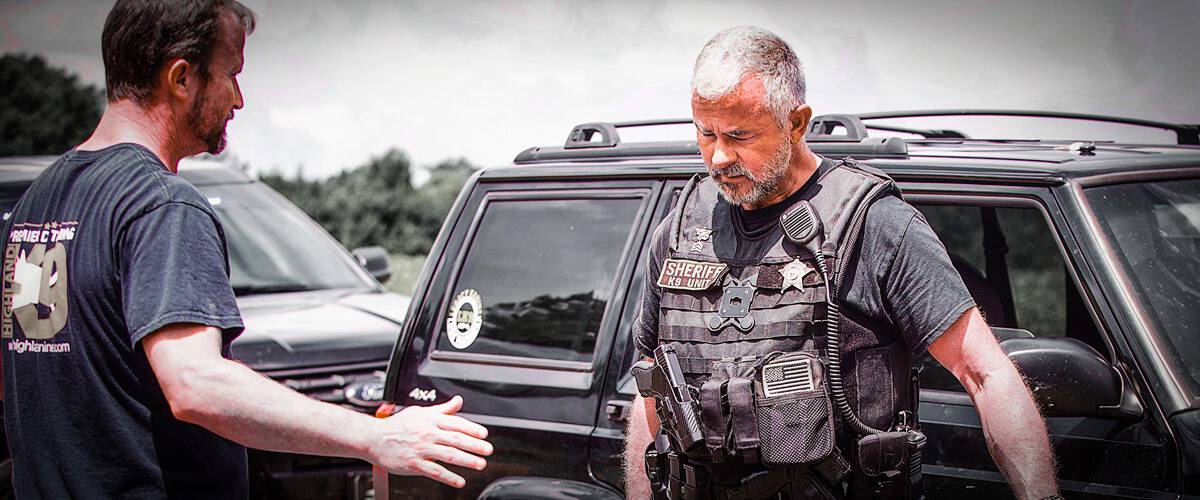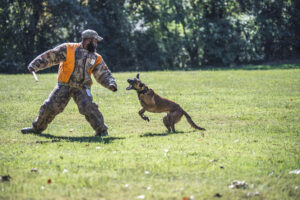Many years ago, when I began my career as a police dog handler, it was relatively common for handlers to look up to and seek out qualified and respected trainers in order to develop viable training programs, solve problems and to get advice to improve their skills overall. It seemed as though these trainers were revered by handlers and most always had answers to questions and solid advice for improvement based on years of practical experience. Good trainers constantly sought out new information and answers to the questions they had. They were also known for creating good dogs, skilled handlers and great K9 teams as well as being able to modify those errant behaviors of dogs which periodically occurred.
Over the years, as departments and agencies have asked their best handlers to take on added responsibility to cut costs and save time, the lines have been skewed between that of handler and that of the trainer. It is very common these days to meet handlers that refer to themselves as trainers. The way some dog training companies combine the handler course with the training of the dog for upwards of 16 weeks contributes to this common misconception. However, training one dog as part of a step-by-step program under the close direction of a trainer does not qualify a handler to be a trainer. During this process or in the process of daily departmental training, these handler “trainers” are simply mimicking the practical skills used by their trainer which are observed or taught without the inclusion of any formal education regarding the training of dogs or people. By emulating these behaviors or skills with a new dog and achieving this “out of the gate” success, many handlers believe this qualifies them as a professional trainer when in fact it takes so much more to make a good trainer. There are a number of essential components and skills good trainers possess that clearly separate them from handlers.
Good, professional police dog trainers possess a foundation of knowledge and an impressive skillset that is required to create great dogs and K9 teams. First and foremost, great trainers have a concrete foundation in the understanding and application of operant conditioning principles and the proper use of training tools to employ these methodologies. They also understand successive approximations and how to apply them to develop reliable complex behaviors in conjunction with the trainer’s ability to understand and utilize various schedules of reinforcement to achieve long term, dependable results. These are just a few of the skills required to be a good professional police K9 trainer.
Operant Conditioning

Comprehension and application of operant conditioning principles is the core of any effective training. Without a solid understanding of operant conditioning, as a whole, effectively attempting to create or modify behaviors will likely fail. This failure is a result of the inadvertent misapplication of these principles during the course of training and the unexpected result of unwittingly using punishment with behaviors that we want to keep and more frequently using reinforcement in conjunction with behaviors that we wish to extinct or get rid of. As stated earlier, these principles are the central elements of any good training but they are often misunderstood and their importance is not stressed in most training programs. Understanding that reinforcement, whether positive or negative, will always increase the likelihood of a behavior and that punishment, whether positive or negative, will always decrease the likelihood of a behavior is vital in obtaining positive results when developing effective training programs.
Behavior Shaping and Successive Approximations
Many of the activities we require of police dogs are considered to be complex behaviors. In order to successfully teach complex behaviors, we must understand and be able to apply successive approximations. The term successive approximations simply means that we break complex behaviors down into much smaller, simpler parts that are easier to understand and obtain and then we put those parts together in a way that make the complex behavior whole. In police dog training, successive approximations can be used in detection training, patrol dog training, trailing, obedience and behavior modification. Successive approximations should be used in almost every aspect of police dog training in order to create a training program that is simple and easy for the dog to understand.
Cataloging Motivators
What motivates the dog? Skilled trainers understand that, like humans, dogs are rarely motivated by only one singular thing. We often find dogs are motivated by both primary and secondary reinforcers and some dogs work for limited reinforcers where the list of motivators for other dogs is expansive. Unconditioned or primary reinforcers are often easier to control in training but are often difficult to proof the dog off of. Secondary or conditioned reinforcers require more skill and practice to control but typically are easier to deal with in the proofing process. Experienced trainers will take the time to find out all of the things that motivate a dog and catalog those reinforcers while constructing a hierarchal structure of their value for the dog. This process is important because some reinforcers will have a higher value to the dog than others and there may be activities that we want the dog to perform that require lower level motivators. Other, more intense, activities would likely require higher value motivators.
Timing

We can never guarantee the association a dog will make with reinforcement or punishment. Timing is critical in order to get the desired results and to ensure the dog is making the proper association with reward or reinforcement. An example I often see is that of a detection dog that is sitting patiently alerting to odor, staring intently at the source when the handler reaches for a reward in a pocket that is closed with Velcro. As the dog turns his head away from the odor, he is presented with his reward. This timing signals to the dog that turning his head away from odor is the behavior that we want. In reality, this behavior is not generally acceptable and is frustrating for handlers who often develop methods to fix the problem which results in only furthering the issue. Inappropriate timing of punishment is just as detrimental in training. While biting, patrol dogs are often punished for not releasing the bite but the punishment is often delivered harshly while the dog is on the grip. What association is the dog making with this punishment? Is it likely the dog believes it is being punished for biting?
Understanding the Importance of Signals
Understanding discriminative stimulus is critical to creating effective communication. Discriminative stimulus, simply put, is a cue or signal. These signals have to be clear and consistent in order for a dog to be able to recognize them and relate a behavior to them. I once worked with a handler who claimed he had been taught to use the same Dutch command for the dog to out, recall, heel and to sit. Expecting the dog to perform a variety of different behaviors based on one signal can be extremely confusing for any dog. I am often a proponent of limiting the signals that we use with a dog. As in many circumstances, we excessively communicate with dogs in a way that is confusing, but we shouldn’t limit communication to the point that it is equally as confusing to the dog. If we are not careful, much of our training will develop the risk of creating discriminative stimuli that is unnecessary or confusing for the dog. For example, during detection exercises, we frequently observe things such as handlers reaching for a reward, handlers moving backwards in a way that creates a shuffling sound with their feet, tightening and loosening of the leash, and moving erratically in a search area. These activities create various discriminative stimuli that give the dog information that is confusing and unnecessary. The example above demonstrates how one session can include visual stimuli, audible cues and physical prompts that good trainers will notice and help to eliminate. Otherwise, a dog will learn these unintentional cues have meaning and they will begin to respond to them in a way that is undesirable.
Effective Application of Training Tools
All too often we see handlers and “trainers” having difficulty with either the “OUT” or “RECALL” commands, and often trying to resolve the issue quickly prior to a certification. The process often has many similarities in that the dog, handler and decoy are all on the field and the dog won’t “OUT” or “RECALL” reliably. As a result, the handler goes to the trunk of his cruiser and heads back with a remote training collar now fitted on the “stubborn” dog. The dog is sent and soon the handler yells out a command. When the dog doesn’t comply right away, the handler pushes down on the stimulation button until his thumb turns white. The dog screams and bites in harder. This process continues until everyone involved is utterly frustrated. By the end of the session, the dog no longer has a problem with the “OUT” or “RECALL” because now it won’t pursue the decoy or bite. By not understanding the proper application of a training tool, we have now traded one problem for another. This does nothing to further our progress in training and preparing the dog for certification.
A good trainer understands the proper application of a variety of training tools including remote training collars, pinch or prong collars and even clickers used to mark appropriate behaviors. There are various tools that can be used to obtain the desired results that we aim for in our training of dogs. I am not advocating for one or discouraging the use of any specific tool for training as long as they are used properly. One argument that is commonly used in regards to remote and pinch collars is that “they can be misused”. I agree with this assessment; they can be misused. However, I would contend that a leash and even a clicker can be misused, but rarely do people argue the employment of these tools in dog training.
Behavior Analysis & Modification

Effective behavior analysis and behavior modification are vital skills in the “toolbox” of any effective trainer. Efficient behavior analysis and behavior modification is central to all problem solving in training. Whether the problem is complex, the dog is overly aggressive with the handler for example, or something as simple as a dog that alerts too far away from odor or a dog that spins in the back of the cruiser too much, a solution is often available and good dog trainers will frequently have multiple options to remedy the issue. Far too often, handlers will encounter issues and problems with their dog and have no idea what to do to fix the problem. As a result, the handler will discuss the problem with other handlers for ideas or fixes to the problem. With little or no consideration for diagnosing the root cause of the issue, the handler will begin a process of trial and error, applying tips and ideas from others in hopes to remedy their situation. This often results in the creation of new problems that never existed before. These new problems are a byproduct of attempting to deal with a problem without the proper foundation of knowledge and understanding of how to determine the root cause of the initial problem.
Training K9 Handlers
Good trainers continuously strive to create successful K9 teams. A major factor in accomplishing this is to develop highly skilled handlers who have a comprehensive understanding of how to properly handle and problem solve any issues with their dog. In order to accomplish this, handlers should have a basic understanding of many of the principal skills that have been discussed in this article. Simply teaching handlers to place a leash on a dog and imitate movements and actions taught to them by someone with more experience will never create the most effective teams. This is exactly the way that I was taught during my initial handler course. The instructor would demonstrate something with a dog and each handler in the class was expected to repeat the process precisely with their dog. There was no explanation of why we were doing it or what should happen if we didn’t obtain the expected outcome. What happens if we have a problem? What if the dog doesn’t perform the task in a different environment? None of this was ever explained. This later led me to seek out experienced and qualified trainers to help me better understand and work with my assigned dog. I don’t regret my initial training as it has been the guiding event for the continual improvement of the programs that we offer now. Great trainers not only know how to apply operant conditioning and other learning principles to dogs, but they also understand these same principles apply when teaching humans and they use them effectively to do so.

In closing, it is important to note that not everyone in this industry has to be a trainer in order for the industry to improve. There is nothing more gratifying than watching a skilled handler perfecting his craft and developing a relationship with his K9 partner in a way that they consistently excel in the field. More agencies are developing their own “in house” programs in order to train their own dogs and handlers which can be a successful endeavor as long as it is implemented correctly. Some of the more efficient programs are those which have experienced trainers who understand all of the skills that are required to get results and sustain these results over a dog’s entire career. As in many circumstances, we must recognize the value of formal education for those who aspire to be professional police dog trainers in the industry. A well-structured, formal education in canine behavior and learning theory has proven to have a profound impact on the success of a professional dog trainer. Professional training is vital in any trade and dog training is no exception. For those who are, or wish to be, professional police dog trainers, recognize that excellence is critical and mediocrity is not an option. Strive to learn as much as feasible and to be the best dog trainer or best handler possible.




